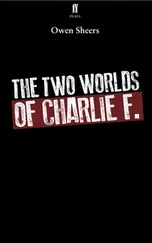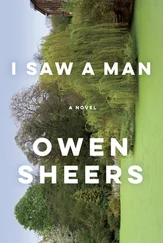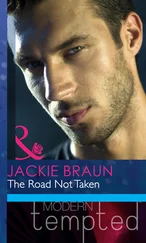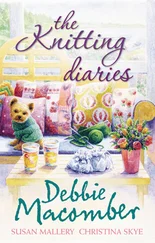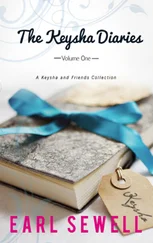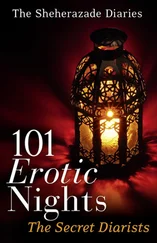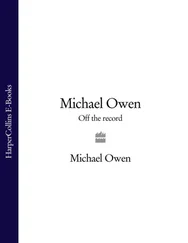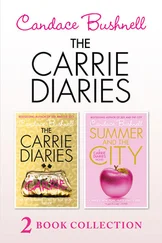This street bears right, past the Chivhu hospital, a complex of low wooden buildings behind a wire-mesh fence with scrubland grass growing in between them. Some orderlies smoke under the shade of a large open thatched shelter that stands apart from the main buildings. At the corner of the hospital the road ahead of me peters out into veld grass, a narrow track and trees, so I turn left and start walking up the road I was told will lead me to Leonard’s farm at Maronda Mashanu. It stretches ahead of me, a long, straight, rust-red dirt road that narrows into the horizon like a textbook perspective diagram. Slightly cambered, its centre has been driven smooth by truck and bus tyres, scattering the larger pebbles into small banks and dips at it edges in which the rain water has collected in long thin puddles. A strip of grass flanking either side develops into thick bush away from the road: low green trees punctuated with rounded granite boulders. The wind has whittled some of these into standing stone sculptures, one stone on another, and many are rashed with orange lichen. Sometimes the words ‘Bus Stop’ are painted on them in black writing. A line of telegraph poles margin the road on the left, their single wire a dark pencil line against a sky that is still portentous with rain.
I pass the hospital, where a man is sitting outside the entrance with his young daughter. The left side of her face is swollen, shutting one eye and blowing out her cheek. Her father wears an old suit jacket over a jumper, flannel trousers and battered slip-on shoes. He raises a hand and asks ‘How are you?’ in the Zimbabwean way, with the emphasis on the ‘you’. As he does so his daughter turns away from me and hides her face behind her father’s jacket. I tell him I am fine and walk on, my rucksack pulling at my shoulders and my water bottle swilling at my side. Occasionally the alarm of an insect trill laces the quiet, but otherwise the road is silent, just the sound of my own breath and my feet on the stones. Just once a man on a bicycle appears at the road’s sharpened point on the horizon and cycles towards me, rising and falling over the undulations like a boat on a gentle sea. He gets nearer, until I can hear the whirr of his wheels, passes me, then is gone.
After about two miles I pass a battered farm sign on a pole, white paint on black, ‘Farm № 4, Cripps Road’. This is your road, then, the one you walked for forty years, made with your own feet, from Maronda Mashanu to Enkeldoorn and back, carrying your letters, your manuscripts, your grievances, your hopes and your memories. Many roads and streets in this country have changed their names since independence. Windsor Way is now Makombe Way, Stanley Avenue is Jason Moyo Avenue, but this is still your road, Cripps Road. Long, straight, unforgiving, it seems suitably yours, and now I am walking up it to find you in your grave, carrying my questions about your life and why you lived it the way you did.
♦
Ray Brown is another person who has asked these questions before me. An English professor at the university in Harare, he has studied your poems and your stories for traces of you and like Betty Finn he is long familiar with your life. I sat in front of Ray in his house on The Chase, a wide Harare street with rows of jacaranda and musasa trees obscuring the houses that line it on either side, and listened to him talk about you. He is a professor to the bone. Embraced by his huge armchair, he clenches his teeth on a pipe and thinks in silence for a long time before speaking. A wayward fringe of white hair falls across his forehead, beneath which a pair of large square glasses dominate his narrow face. He is a man of literature, and it is your writing that fascinates him: an English nineteenth-century poetic sensibility brought to bear on an African landscape at the dawn of the twentieth. A Keats scholar himself, it is maybe the mirror-man at work again, but he stresses the juxtaposition of your love of Keats, the physical sensualist, against your life of spiritual ideal and physical privation; the romantic nature of your writing against what he calls your ‘muscular Christianity’.
When I ask him if he knows of a child, he is silent for longer than one of his usual pauses, then says, ‘No, I doubt it.’ He does tell me, however, of an occasion years ago when a girl stood up at a symposium held at the university and claimed to be your granddaughter, but he says that he and the other academics dismissed her as an impossibility. When I tell him that my great aunt also met a woman who said she was your granddaughter, and that I have an intuition that it was a specific event, something like a love affair that first sent you to Africa, he is quiet for a long time again. Eventually he stands, and goes to look for a book on his bookshelf. He brings back a selection of your poetry and prose, thumbs the pages, finds what he has been looking for, leans forward with his elbows on his knees and says, ‘See what you think of this, it’s from a poem called ‘To the Veld’.’ And then he reads:
Take my love and praise…
Most of all for thy weariness –
The homeless void, the endless track,
Noon thirst, and wintry night’s distress –
For all tense stretchings on the rack –
That gave me my lost manhood back.
He looks at the page for a moment, then looks up at me again, peering over his glasses that have slipped down his nose, and says, ‘That last line has always troubled me, ‘my lost manhood’. Why lost, do you think?’
♦
After two hours’ walking, my water bottle is empty and I can sympathise with your vision of the ‘endless track’. The clouds are bulking out above, darkening with rain and I’m worried that this is somehow not your road after all. I decide to carry on until the next farm at least, and walk on down a dip and over a little bridge. The land on the banks of the river that flows under it is covered in a lush grass that rises up into meadows on either side. A jacaranda tree hangs over the road, heavy with its lilac, bluebell flowers, and in the distance I can see a man carrying a spear and walking with two hunting dogs. I stop and rest, realising why you could have thought Mashonaland an Arcadia. Its country is unoriginal for miles, but then every now and then it offers up a place like this, where the simple beauty is all the more striking for rising out of the monotony of the veld.
I am about to turn around and find some shelter before the rain, which I can see sweeping across the land over in the east, reaches me, when I see the sign for Leonard’s farm. It is a wide hoop of round metal painted white, with two dark-blue stripes like an old — fashioned life-guard ring. Leonard’s name, the farm number and the P.O. Box number are written on it, also in blue, the words invaded by patches of rust. It hangs on an old metal gate, which I push open and walk through, following a rough track that curves up to a homestead scattering of huts on slightly higher ground.
As I walk up the track I take stock of the place. On my right is a single brick rondavel with a neat thatched roof and a line of washing hanging quietly in the still air outside it. Past this, there is a cattle kraal, not made from regular planks or fencing wood but from whole branches planted in the ground with other branches woven in between them to form the horizontal rungs. It gives the impression of intricate planned disorder, part natural, part artificial. Inside, a couple of short-horned cows shift from foot to foot in the mud. Past this, still on my right, there is a squat concrete well with its metal bucket pulled up short to the winding axle and a thin short-haired dog lying at its base, pole-axed by the humid heat. Ahead of me is the homestead proper, a rough square of dusty ground flanked by a whitewashed iron-roofed bungalow on the right, and a couple of thatched rondav-els, raised on bricks, to its north and its south. Inside the centre square there is a wooden maize holder, constructed like the cattle kraal from undeveloped wood, an ancient green plough being reclaimed by the earth it once disturbed and a corrugated-iron drying stand on which a pile of red, green, blue and white pots and pans show up brightly against the background of yellow veld grass. A scattering of thin chickens, their red wattles trembling as they walk, strut the dusty ground, pecking for food. Just outside the square is a plain concrete block, its corrugated roof pinned down by stones, with an entrance at each end. White arrows painted on its walls point to each of them, and written above them in English and Shona are the words VARUME
Читать дальше
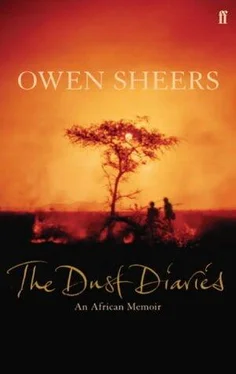
![Никки Сикс - Героиновые дневники. Год из жизни павшей рок-звезды[The Heroin Diaries - A Year in the Life of a Shattered Rock Star]](/books/78612/nikki-siks-geroinovye-dnevniki-god-iz-zhizni-pavshej-rok-zvezdy-the-heroin-diaries-a-yea-thumb.webp)
